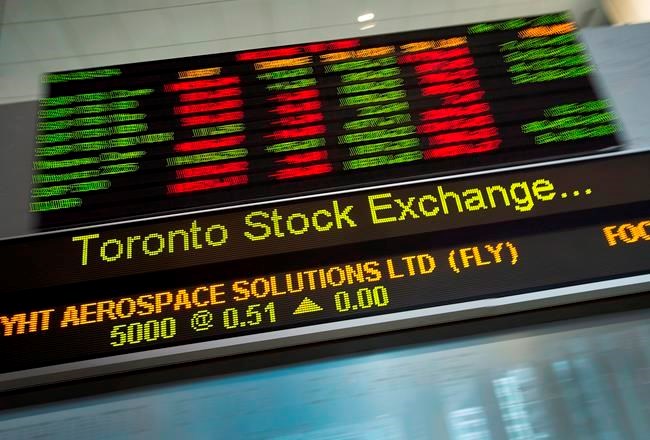TORONTO — Rising gold prices propelled Canada's main stock index higher on the first trading day of the year.
U.S. markets started the day by reaching record highs but sentiment waned over uncertainty about the trajectory of the COVID-19 outbreak and Tuesday's run-off elections in Georgia.
Despite vaccines, high levels of hospitalizations continue to strain the American health-care system while there are fears that trends could worsen from holiday gatherings and a new strain of the virus, said Angelo Kourkafas, investment strategist at Edward Jones.
"So all that paints the picture that the light is bright at the end of the tunnel, but we're still in the tunnel at the moment," he said in an interview.
Two Senate elections in Georgia could shift the balance of power in Washington, D.C. and determine the scope of regulatory changes.
A Democratic sweep of the elections would put them in complete control of Congress and the White House and potentially result in some corporate tax increases by the new Biden administration.
Similar anxieties preceded November's presidential election.
"Once we got some clarity, the markets calmed so it could be the same thing now," Kourkafas said
While he said the market is still expecting a split Congress, the economic trajectory shouldn't change because higher taxes would likely be partly offset by more government spending from an infrastructure deal.
"So we don't think either outcome is really going to change the narrative that much. It will come down to what has really been the biggest driver of the markets since last year which is the virus and the options around the vaccine and the pace of the vaccine rollouts as we progress in 2021."
The S&P/TSX composite index closed up 94.41 points at 17,527.77.
In New York, the Dow Jones industrial average was down 382.59 points at 30,223.89 after hitting a high of 30,674.28.
The S&P 500 index was down 55.42 points at 3,700.65 after peaking at 3,769.99, while the Nasdaq composite was down 189.83 points at 12,698.45 after reaching 12,958.72.
The Canadian dollar traded for 78.43 cents US compared with 78.54 cents US on Dec. 31.
The materials sector surged 6.5 per cent as gold prices hit an eight-week high on rising inflation expectations, said Kourkafas.
That pushed Kinross Gold Corp. and Barrick Gold Corp. up 9.4 and 8.6 per cent, respectively.
The February gold contract was up US$51.50 at US$1,946.60 an ounce and the March copper contract was up 3.55 cents at US$3.55 a pound.
A 14.2 per cent jump by Aurora Cannabis Inc. pushed health care up 4.1 per cent while energy gained more than one percentage point despite lower crude oil prices.
The February crude oil contract was down 90 cents US at US$47.62 per barrel and the February natural gas contract was up 4.2 cents at US$2.58 per mmBTU.
Imperial Oil rose 2.4 per cent while shares of both Cenovus Energy Inc. and Husky Energy Inc. climbed 2.1 per cent.
Technology and consumer discretionary led the four losing sectors that included industrials and financials.
Expectations are for an economic slowdown in the first quarter before it gains steam in the second half of the year, said Kourkafas.
"We do think that the outlook is positive but in the near-term it's going to be a little bit of a bumpy rise to get across to the other side, to get over to the post-vaccine phase."
This report by The Canadian Press was first published Jan. 4, 2021.
Companies in this story: (TSX:ABX, TSX:K, TSX:IMO, TSX:CVE, TSX:HSE, TSX:ACB, TSX:GSPTSE, TSX:CADUSD=X)
Ross Marowits, The Canadian Press



